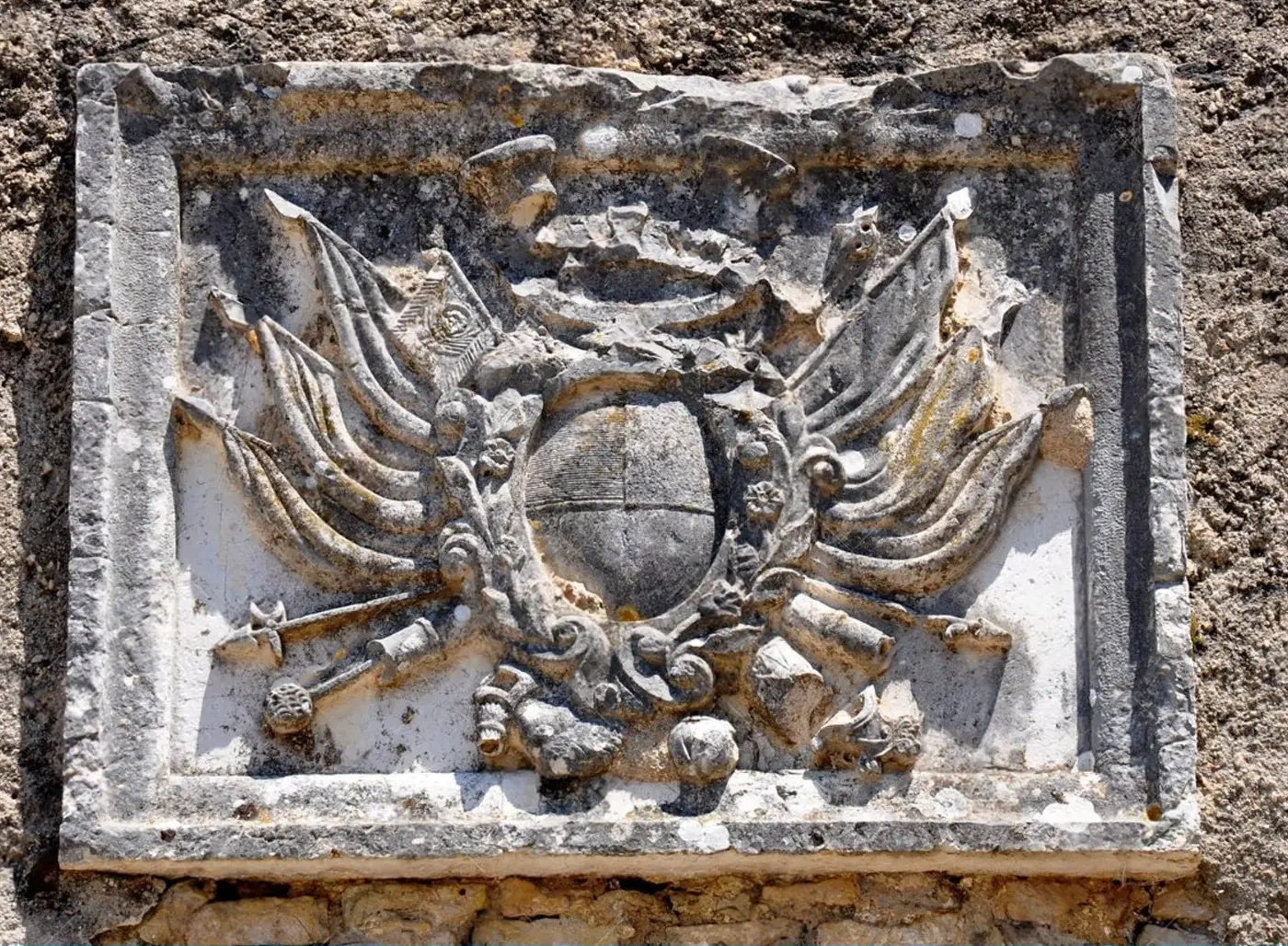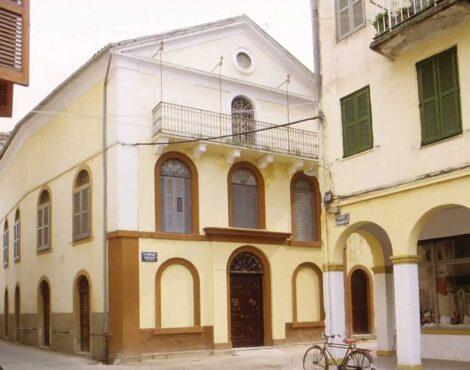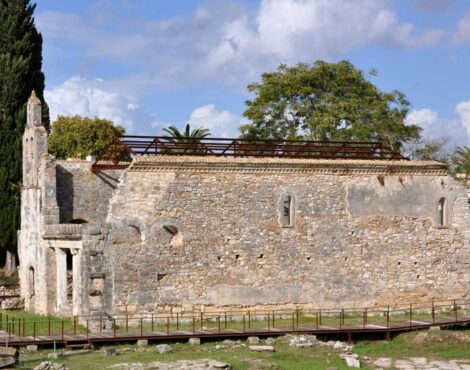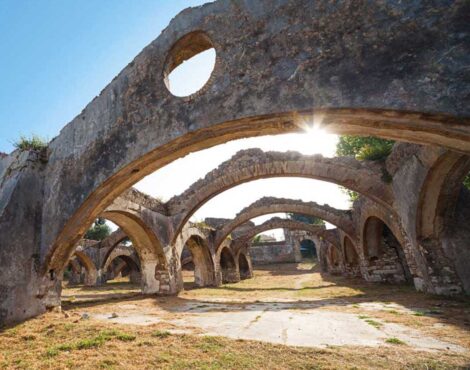Corfu, one of the most historically and culturally rich islands of Greece, has a unique identity reflected in its symbols. These symbols are not merely decorative elements but carry deep historical and cultural significance, mirroring the influences the island has received throughout its history. From the Venetian rule to the modern era, Corfu’s symbols have shaped its collective memory and local identity. Among the most characteristic symbols of Corfu are the Apidalos Naus, the Lion of Saint Mark, Saint Spyridon, and the island itself with its distinctive architecture.
The Apidalos Naus is the official emblem of Corfu and one of the island’s most significant symbols. It depicts an ancient ship without oars (apidalos, meaning “without a rudder”), symbolizing the island’s naval power and autonomy. This emblem is associated with Greek mythology and Corfu’s maritime traditions. The use of the Apidalos Naus as an emblem dates back to antiquity when Corfu was known for its naval strength. The island participated in numerous naval battles and was of strategic importance for trade and maritime transport. The Apidalos Naus even appeared on ancient Corfiot coins, signifying the city-state’s economic and political independence. Today, this symbol remains alive, appearing on official documents and local institutional emblems, reinforcing Corfu’s deep connection with its naval past.
Another important symbol of Corfu is the Lion of Saint Mark, the emblem of Venice. Corfu was part of the Serene Republic of Venice for more than four centuries (1386-1797), and Venetian influence is still evident in many aspects of the island, including its architecture and emblems. The lion appears on many monuments, fortresses, and public buildings across Corfu, including: The Gates of both the Old and New Fortresses, various sections of the fortress walls and several Venetian archives and historical records. The Lion of Saint Mark is often depicted holding an open or closed book. When the book is open, it bears the Latin phrase “Pax tibi Marce, Evangelista meus”, meaning “Peace to you, Mark, my Evangelist.” When the book is closed, it signifies a time of war. Even after Venice fell to Napoleon in 1797, the Lion of Saint Mark remained one of Corfu’s most powerful symbols, serving as a reminder of the island’s Venetian heritage.
There is no symbol more sacred and deeply rooted in Corfu’s identity than Saint Spyridon, the island’s patron saint. Saint Spyridon is considered the savior of Corfu, as according to tradition, he saved the island from the Ottoman invasion in 1716. The Church of Saint Spyridon, which dominates Corfu Town, houses his sacred relics and is a landmark for both locals and visitors. The saint is so important to the island that his name (Spyros) is one of the most common names among Corfiots.
Beyond traditional emblems, Corfu’s architecture itself serves as a symbol of the island’s historical heritage. The narrow kantounia (alleyways), neoclassical buildings, imposing squares, and Venetian fortresses are all living representations of the cultures that have left their mark on the island. The Spianada, Greece’s largest square, The Liston, with its Venetian and French influences, are prime examples of architectural symbols closely tied to Corfu’s identity.
The symbols of Corfu reflect the island’s multicultural history and distinct identity. From the ancient Apidalos Naus to the Venetian Lion of Saint Mark and Saint Spyridon, each symbol tells a story that continues to shape Corfu today. These symbols are not just historical remnants but living elements that connect the past with the present, giving Corfu its unique character.





